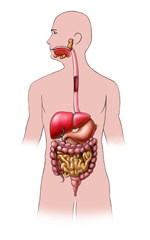Flexible Sigmoidoscopy and Colon Cancer Pre-Screening Fact Sheet
One in 20 people develop colon cancer. There are many ways to help prevent colon cancer and pre-screening tests are an integral part of keeping people safe from this disease. A flexible sigmoidoscopy is a simple and inexpensive test that can help doctors catch early signs of cancer. It can reveal if a patient has ulcers, abnormal growths, or tissue inflammation. Doctors may also use this test to figure out the cause of issues such as weight loss, abdominal pain, anal bleeding, and changes in bowel movements. Along with eating a high-fiber diet and exercising regularly, tests like a flexible sigmoidoscopy are an effective way to decrease deaths from colon cancer.
Overview of the Test
A flexible sigmoidoscopy is a simple and mildly invasive test. It is very safe and effective for identifying signs of cancer. Surgeons usually perform the test in procedure rooms, but some doctors perform it in hospital settings.
During a flexible sigmoidoscopy, a surgeon or doctor inserts a tube into the anus. The tube has a camera on the end, so as the tube passes into the colon doctors can observe the lining of the lower end of the colon. The tube is thin, soft and lubricated. Since there are few nerve endings in the rectum, most patients do not even feel the tube moving.
Evidence Base and Science behind the Test
The flexible sigmoidoscopy is commonly used in some countries, but a more invasive procedure called a colonoscopy is preferred in other areas. A recent study conducted at the University of Pittsburgh Medical Center was done to determine whether the flexible sigmoidoscopy was an effective screening tool. A colorectal malignancy may cause around 10 percent of deaths from cancer, but early detection of a malignancy gives people a 92 percent five-year survival rate, making the need for a screening test incredibly important.
The University of Pittsburgh study examined 155,000 people between the ages of 55 and 75 who received a simple scope exam from 1993 to 2001. The patients got another scope exam three to five years after the first or were given standard care, which included other types of screening if the patient or their physician requested it. Some people got a colonoscopy if there were findings that appeared suspicious. Follow-up was conducted around 12 years later. Researchers discovered that the study group who were given a sigmoidoscopy had 21 percent fewer colon cancer cases and 25 percent fewer people had died from cancer.
How it is done
The flexible sigmoidoscopy test is usually one of many procedures performed during a routine cancer screening for people older than 50 years of age. Patients are awake during this test, and only rarely are given a light sedative.
The patient lies on his or her side for the procedure. A doctor injects air into the anus to make the passage wider. A flexible tube called a sigmoidoscope is inserted into the anus and then slowly pushed up through the bowel. The attending physician observes the intestinal lining. The tube is removed typically after five to 15 minutes.
Who does it?
Surgeons and family physicians.
Cost
A sigmoidoscopy is much less expensive and less invasive than a colonoscopy, which is the more popular test used in the United States. More doctors in the US are starting to use this cheaper method of screening for colon cancer, which is already fairly common in the United Kingdom. A flexible sigmoidoscopy may cost as little as $150 to $300, whereas a colonoscopy may run from $1,000 to $2,000. Medicare often covers the cost of screening tests for colon cancer.
When and How Often?
A flexible sigmoidoscopy is recommended every five years for people ages 50 and older. It may be performed on younger people or patients with a family history at more frequent intervals. Doctors sometimes use this test if a patient has symptoms like colitis, bowel changes, diarrhea, or bleeding from the anus. It is also ordered before certain surgeries.
Issues
This test is very safe and rarely causes any unpleasant effects or complications. Some people report feelings of pressure during the procedure. In rare cases, patients experience pain or bleeding and may have to stop partway through the test or see a doctor afterward.
It is important that prior to the test, a person’s lower colon is empty. It is therefore necessary to have one or even two enemas beforehand. Some people may be given laxatives or be told to change their diet before they are given a flexible sigmoidoscopy.
Certain medications and supplements could cause complications. People who are taking vitamin E or who are on blood thinning medications, NSAIDS, or aspirin should discuss this with their doctor before the test.
References
- American Academy of Family Physicians
- National Digestive Diseases Information Clearinghouse
- Society of American Gastrointestinal and Endoscopic Surgeons
- Huffington Post
- Fast Living Slow Ageing; Kate Marie and Christopher Thomas; 2009
Last Reviewed 02/Mar/2014
Editor
Latest posts by Editor (see all)
- Oily fish and diabetes prevention - 04/06/20
- Manage the andropause - 11/12/17
- Testing testosterone levels - 07/12/17







